Overview
Broad Desired Goal: To protect and improve the health and abundance of bivalve populations for continued harvesting by Metlakatla First Nation.
Gather Information and Involve the Community to Maintain Butter Clam Populations: The butter clam management action strategy focuses on relatively low-cost actions, including data collection, community-based actions, and promotion of existing butter clam policies. The strategy includes 2 prerequisite actions, 12 standard actions, 4 enhanced actions, and 4 stringent actions.
Internal/External Implementation Pathway: Intertidal clams, including butter clams, and subtidal clams are managed by the Metlakatla Aquatic Resources Department. They continue to work together with Fisheries and Oceans Canada to develop and implement a co-management program for a FSC bivalve harvest in Metlakatla Territory.
Current Phase of Work: Pilot value, Phase 4 – Developing a management action strategy
Why were butter clams chosen as a pilot value?
- Traditional and cultural importance
- Sensitive to marine pollution and contamination
- Management priority for Metlakatla First Nation
- Important ecological role
Indicators
The condition indicator for butter clams is population density. Butter clams can be affected by three key stressors: contaminant levels (biological and chemical), harvest levels, and change in intertidal beach habitat. These stressors impact butter clam populations by affecting growth rate, reproductive rate, or mortality rate.
- Butter clam population density: # of individuals/m2
Current Condition and Future Trend
Current Condition Results (2018)

Current condition is unknown at this time. Extensive clam surveys are underway at several beaches in the territory (2018-present). The survey results will be supplemented with interview data from Metlakatla clam harvesters and knowledge holders to better understand the data in the context of past conditions. Population density estimates at surveyed beaches are shown in the figure.
What We Know About Butter Clams (2018)
Mean and Maximum Length, Weight and Age Estimates
Summary of butter clam maximum and mean lengths and weights, and mean age at maturity and at recruitment to legal size.
|
BEACH |
Length (mm) & Weight (g) |
Age (years) |
||
|
Mean |
Max | Mean |
Max |
|
| Dundas Point |
65 mm 104 g |
103 mm
392 g |
3.45 |
8.12 |
| Observation Point |
67 mm 103 g |
99 mm
305 g |
3.00 |
7.84 |
| Clam Garden |
48 mm 57 g |
87 mm
143 g |
6.33 |
11.1 |
Age Demographics
Shows the distribution of individual clam ages for surveyed beaches. This information tells us whether the population is dominated by older clams, younger clams, or a mix among age classes.

PollutionTracker Contamination Results
The PollutionTracker Program is an initiative of Ocean Wise Conservation Association’s (Ocean Wise) Ocean Pollution Research Program which collects high resolution contaminant data for sediment and mussel samples along the entire BC coast. Metlakatla is a founding partner for the program and has collected samples in and around the Prince Rupert Harbour in 2016, 2018 and 2020. Learn more at https://pollutiontracker.org/
Future Trend
Currently, there are no available forecasts for butter clams in Metlakatla Territory or on the north coast of BC. Fisheries and Oceans Canada shellfish biologists and butter clam survey results from neighbouring First Nations indicate that butter clam populations on BC’s North Coast (including Metlakatla beaches) are likely stable, with regularly harvested beaches having higher productivity. Butter clam populations have a wide range of sizes and ages on the north coast, which means there is likely good recruitment and stability in the populations.
Cumulative Effects Management Regime
Broad Desired Goal
To protect and improve the health and abundance of bivalve populations for continued harvesting by Metlakatla First Nation.
Tiered Management Triggers

Management Action Strategy
Gather Information and Involve the Community to Maintain Butter Clam Populations: The butter clam management action strategy focuses on relatively low-cost actions, including data collection, community-based actions, and promotion of existing butter clam policies. The strategy includes 2 prerequisite actions, 12 standard actions, 4 enhanced actions, and 4 stringent actions.
Examples of Management Actions:
- Stringent Action: Develop monitoring and management policies and plans for key contaminants and find partners to fund and implement plans.
- Enhanced Action: Organize 1 or 2 clam digs per year to teach members where, when, and how to harvest and process butter clams with volunteers.
- Standard Action: Identify and map highly productive and high-quality butter clam (and other bivalves) habitat within territory.
- Prerequisite Action: Develop a long-term monitoring strategy for butter clam populations on Metlakatla beaches with regular surveys.
Implementation Challenges
- Requires Long-Term Monitoring Strategy: A lack of baseline intertidal clam surveys has resulted in some uncertainties about the current condition of clam populations on Metlakatla beaches. A long-term monitoring program will be resource-intensive, both in terms of capacity and financial resources.
- Important Environmental Considerations: Intertidal clam population densities are specific to the time, place, and species; there is natural interannual variability in different populations and under different environmental conditions. As a result, management decisions about clams should consider multi-year population and habitat data.

